A Timely Discovery: Examining Our AMD 2nd Gen Ryzen Results
by Ian Cutress & Ryan Smith on April 25, 2018 11:15 AM ESTA Timely Re-Discovery
Most users have no need to worry about the internals of a computer: point, click, run, play games, and spend money if they want something faster. However one of the important features in a system relates to how they measure time. A modern system relies on a series of both hardware and software timers, both internal and external, in order to maintain a linear relation between requests, commands, execution, and interrupts.
The timers have different users, such as following instructions, maintaining video coherency, tracking real time, or managing the flow of data. Timers can (but not always) use external references to ensure their own consistency – damage, unexpected behavior, and even thermal environments can cause timers to lose their accuracy.
Timers are highly relevant for benchmarking. Most benchmark results are a measure of work performed per unit time, or in a given time. This means that both the numerator and the denominator need to be accurate: the system has to be able to measure what amount of work has been processed, and how long it took to do it in. Ideally there is no uncertainty in either of those values, giving an accurate result.
With the advent of Windows 8, between Intel and Microsoft, the way that the timers were used in the OS were changed. Windows 8 had the mantra that it had to ‘support all devices’, all the way from the high-cost systems down to the embedded platforms. Most of these platforms use what is called an RTC, a ‘real time clock’, to maintain the real-world time – this is typically a hardware circuit found in almost all devices that need to keep track of time and the processing of data. However, compared to previous versions of Windows, Microsoft changed the way it uses timers, such that it was compatible with systems that did not have a hardware-based RTC, such as low-cost and embedded devices. The RTC was an extra cost that could be saved if the software was built to do so.
Ultimately, any benchmark software in play has to probe the OS to determine the current time during the benchmark to then at the end give an accurate result. However the concept of time, without an external verifying source, is an arbitrarily defined constant – without external synchronization, there is no guarantee that ‘one second’ on the system equals ‘one second’ in the real world. For the most part, all of us rely on the reporting from the OS and the hardware that this equality is true, and there are a lot of hardware/software engineers ensuring that this is the case.
However, back in 2013, it was discovered that it was fairly easy to 'distort time' on a Windows 8 machine. After loading into the operating system, any adjustment in the base frequency of the processor, which is usually 100 MHz, can cause the ‘system time’ to desynchronise with ‘real time’. This was a serious issue in the extreme overclocking community, where world records require the best system tuning: when comparing two systems at the same frequency but with different base clock adjustments, up to a 7% difference in results were observed when there should have been a sub-1% difference. This was down to how Windows was managing its timers, and was observed on most modern systems.
For home users, most would suspect that this is not an issue. Most users tend not to adjust the base frequencies of their systems manually. For the most part that is true. However, as shown in some of our motherboard testing over the years, frequency response due to default BIOS settings can provide an observable clock drift around a specified value, something which can be exacerbated by the thermal performance. Having a system with observable clock drift, and subsequent timing drift, is not a good thing. It relies on the accuracy and quality of the motherboard components, as well as the state of the firmware. This issue has formally been classified as ‘RTC Bias’.
The extreme overclocking community, after analysing the issue, found a solution: forcing the High Performance Event Timer, known as HPET, found in the chipset. Some of our readers will have heard of HPET before, however our analysis is more interesting than it first appears.
Why A PC Has Multiple Timers
Aside from the RTC, a modern system makes use of many timers. All modern x86 processors have a Time Stamp Counter (TSC) for example, that counts the number of cycles from a given core, which was seen back in the day as a high-resolution, low-overhead way to get CPU timing information. There is also a Query Performance Counter (QPC), a Windows implementation that relies on the processor performance metrics to get a better resolution version of the TSC, which was developed in the advent of multi-core systems where the TSC was not applicable. There is also a timer function provided by the Advanced Configuration and Power Interface (ACPI), which is typically used for power management (which means turbo related functionality). Legacy timing methodologies, such as the Programmable Interval Timer (PIT), are also in use on modern systems. Along with the High Performance Event Timer, depending on the system in play, these timers will run at different frequencies.
The timers will be used for different parts of the system as described above. Generally, the high performance timers are the ones used for work that is more time sensitive, such as video streaming and playback. HPET, for example, was previously referred to by its old name, the Multimedia Timer. HPET is also the preferred timer for a number of monitoring and overclocking tools, which becomes important in a bit.
With the HPET timer being at least 10 MHz as per the specification, any code that requires it is likely to be more in sync with the real-world time (the ‘one-second in the machine’ actually equals ‘one-second in reality’) than using any other timer.
In a standard Windows installation, the operating system has access to all the timers available. The software used above is a custom tool developed to show if a system has any of those four timers (but the system can have more). For the most part, depending on the software instructions in play, the operating system will determine which timer is to be used – from a software perspective, it is fundamentally difficult to determine which timers will be available, so the software is often timer agnostic. There is not much of a way to force an algorithm to use one timer or another without invoking specific hardware or instructions that rely on a given timer, although the timers can be probed in software like the tool above.
HPET is slightly different, in that it can be forced to be the only timer. This is a two stage process:
The first stage is that it needs to be enabled in the BIOS. Depending on the motherboard and the chipset, there may or may not be an option for this. The options are usually for enable/disable, however this is not a simple on/off switch. When disabled, HPET is truly disabled. However, when enabled, this only means that the HPET is added to the pool of potential timers that the OS can use.
The second stage is in the operating system. In order to force HPET as the only timer to be used for the OS, it has to be explicitly mentioned in the system Boot Configuration Data (BCD). In standard operation, HPET is not in the BCD, so it remains in the pool of timers for the OS to use. However, for software to guarantee that the HPET is the only timer running, the software will typically request to make a change and make an accompanying system reboot to ensure the software works as planned. Ever wondered why some overclocking software requests a reboot *before* starting the overclock? One of the reasons is sometimes to force HPET to be enabled.
This leads to four potential configuration implementations:
- BIOS enabled, OS default: HPET is in list of potential timers
- BIOS enabled, OS forced: HPET is used in all situations
- BIOS disabled, OS default: HPET is not available
- BIOS disabled, OS forced: HPET is not available
Again, for extreme overclockers relying on benchmark results to be equal on Windows 8/10, HPET has to be forced to ensure benchmark consistency. Without it, the results are invalid.
The Effect of a High Performance Timer
With a high performance timer, the system is able to accurately determine clock speeds for monitoring software, or video streaming processing to ensure everything hits in the right order for audio and video. It can also come into play when gaming, especially when overclocking, ensuring data and frames are delivered in an orderly fashion, and has been shown to reduce stutter on overclocked systems. And perhaps most importantly, it avoids any timing issues caused by clock drift.
However, there are issues fundamental to the HPET design which means that it is not always the best timer to use. HPET is a continually upward counting timer, which relies on register recall or comparison metrics rather than a ‘set at x and count-down’ type of timer. The speed of the timer can, at times, cause a comparison to fail, depending on the time to write the compared value to the register and that time already passing. Using HPET for very granular timing requires a lot of register reads/writes, adding to the system load and power draw, and in a workload that requires explicit linearity, can actually introduce additional latency. Usually one of the biggest benefits to disabling HPET on some systems is the reduction in DPC Latency, for example.


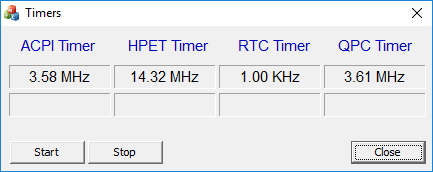
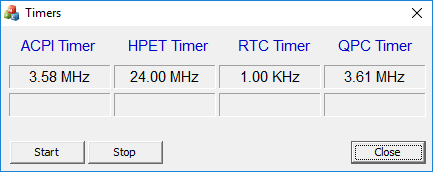
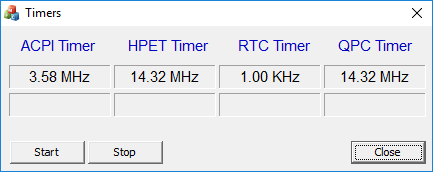
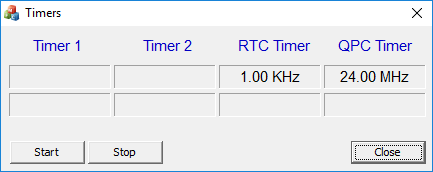
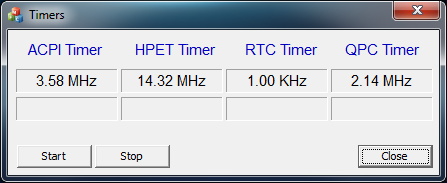
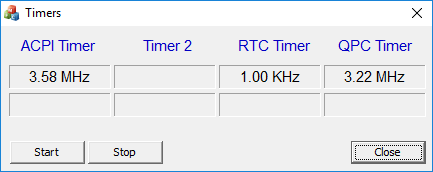








242 Comments
View All Comments
bbertram - Wednesday, April 25, 2018 - link
Well this is interesting! This could have serious implications.Googled HPET really quick and found this: https://www.reddit.com/r/Planetside/comments/416ns...
and then I found this link from that thread....a little ironic.
https://forums.anandtech.com/threads/do-you-have-h...
bbertram - Wednesday, April 25, 2018 - link
An interesting article that talks more about the issue. They look to even have a benchmark to show the impact. The video is also very interesting. The more I research this problem the more i see its been know for a very long time now.https://tinyurl.com/yd8qsh7w
bbertram - Wednesday, April 25, 2018 - link
ohhh...more nice info: https://tinyurl.com/yd39zw8c_mat - Wednesday, April 25, 2018 - link
Very thorough article. I like to point out a few things though, that may add some information to this.AMD and especially Intel have swept this problem under the rug since the launch of Skylake X. I noticed this problem while benching for a review and initially thought that my OS installation was the cause. After some testing I finally found the same root of evil as Ian did. At that time I made a video and called it the "Intel X299 HPET" bug (can't post a link, it was already mentioned in the comments here).
I tried to talk to PR and engineers at Intel for quite a while and they heard about my bug report but refused to comment. Time went by and Threadripper and Coffee Lake were born, both inheriting the same slow HPET QPC timer calls. I informed Intel repeatedly, still no comment.
During that time I wrote the following benchmark that sheds some light on the whole QPC and timer business on Windows. It shows your Windows timer configuration, gives recommendations for precision and performance, provides a way to bench your QPC timer in a synthetic and a game test and gives easy access to change TSC to HPET and vice versa.
As I am not able to post a link here, please search for "TimerBench", you will be able to download it.
I am also the author of GPUPI, one of those benchmarks for overclockers mentioned in the article that enforced HPET timers for secure timing a while back. Since discovering the HPET bug I have pulled back on this restriction. Since Skylake HPET is no longer necessary to avoid BCLK skewing, iTSC is just fine. AMD is still affected though, possibly Ryzen 2 as well (Threadripper and Ryzen 1 was).
bbertram - Wednesday, April 25, 2018 - link
Link to download: https://tinyurl.com/y7w6tg36Link to article: https://tinyurl.com/yd8qsh7w
Arbie - Thursday, April 26, 2018 - link
Wow! Google translator is amazing when going from German to English!mapesdhs - Sunday, May 6, 2018 - link
Might be because English has its roots in Germanic languages. :D Old English sounds a lot like common words in Dutch, and there's a region in Germany where the way German is spoken can sound to other Germans to be rather like English (according to a German guy I know). It's all those pesky Saxons, Angles, etc. :DTrackSmart - Wednesday, April 25, 2018 - link
Thank you _mat! Hopefully your comment gets attention here at Anandtech, and in turn, this article and your work get some attention from Intel. On the AMD side, it sounds like enabling HPET has only a small penalty in most cases, but those differences on the Intel side are very troubling. At the very least we should be forewarned!Dark_wizzie - Wednesday, April 25, 2018 - link
What software causes HPET to be forced on in Windows? I have multiple software installed but it still appears off.Dec666 - Wednesday, April 25, 2018 - link
Hi, AT.First of all, I wanted to thank you for an extreme effort you put in your reviews and analysis.
My thinking on the subject is that if you disable HPET in OS, this may make your numbers and review conclusion be irrelevant to the real world scenarios. As you have said, many programs (like video streaming, monitoring/overclocking, and potentially motherboard software (not to say about Ryzen Master)) require HPET to be enabled in OS and they will force it during the installation process and most likely won’t inform you about this. That means, that if you’ve installed all the software you going to use on fresh OS (and/or fresh PC), it is very possible that some of that software will have HPET forced and you won’t know about it.
To my mind, most of people, who read CPU reviews, are enthusiasts and/or those, who want to make a decision on CPU purchase by themselves. The majority of people will just buy PC based on others’ opinion or consultant’s advise. So those, for whom 10% difference in performance matters, and/or those, who bought expensive GPU like 1080/1080ti, will probably use monitoring software like HWinfo or Afterburner. That means, that HPET will be forced on their systems. That means, that they will have real world numbers close to what you’ve got in the original Ryzen 2000 review.
Another thing is that by disabling HPET in OS, while doing tests for a new review, you will hide the problem with it on Intel systems. People will not consider this as a potential performance hit or disadvantage of Intel platform in general.
Moreover, I suspect that in future more programs and, probably, next-gen games will require HPET (in order to better synchronize even more threads). Since most of people buy CPU for more than one year, they will have potentially worse experience with Intel CPUs in future, compared to AMD CPUs.
So it looks more logical to me to test CPUs with HPET forced (for all software), but have additional tests with HPET disabled for just games in order to have games tested with HPET both on and off. That will emphasize the problem. For me this is the same reason why it is important to test hardware with all Smeltdown patches and BIOS updates installed.
Thanks.